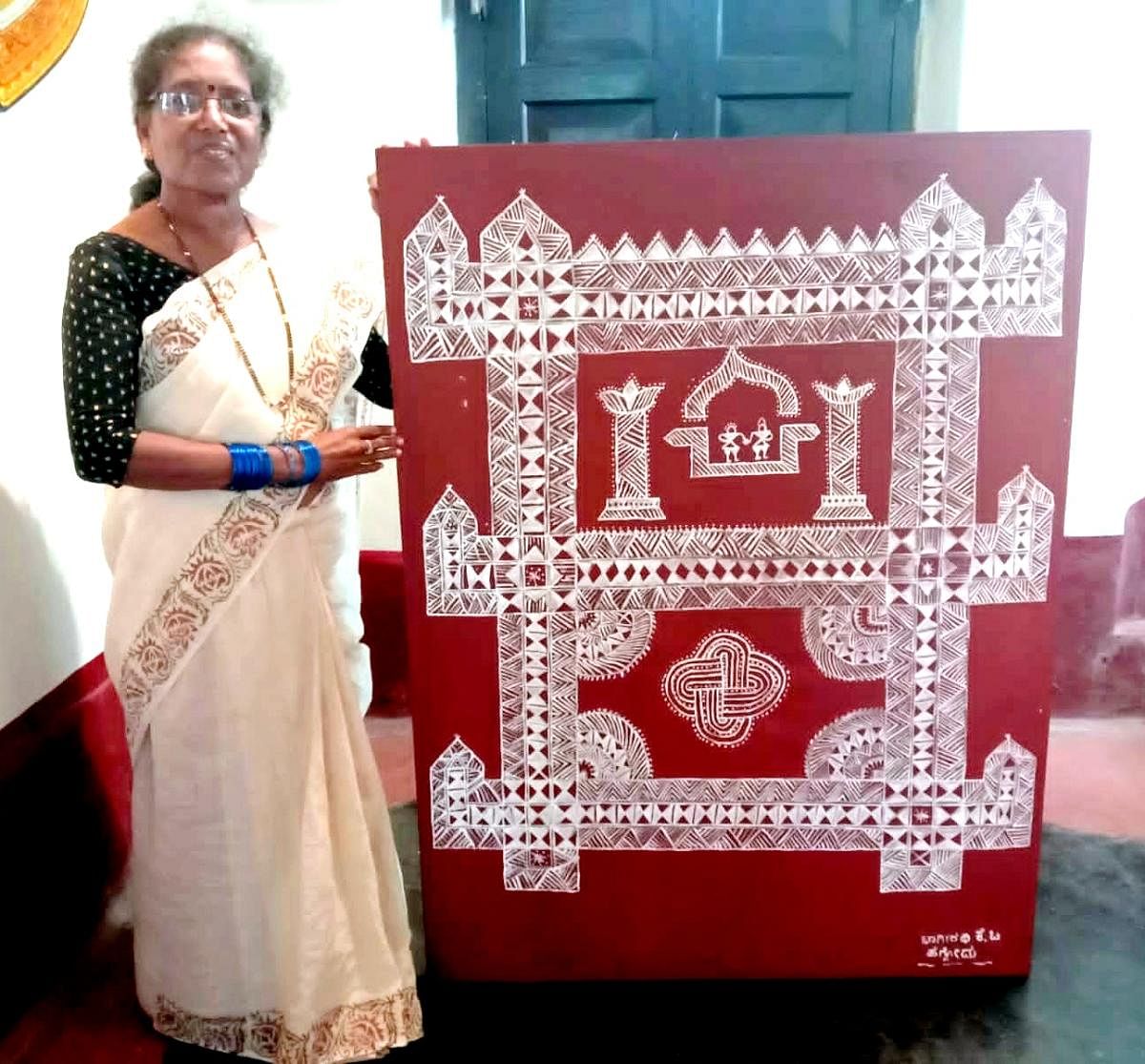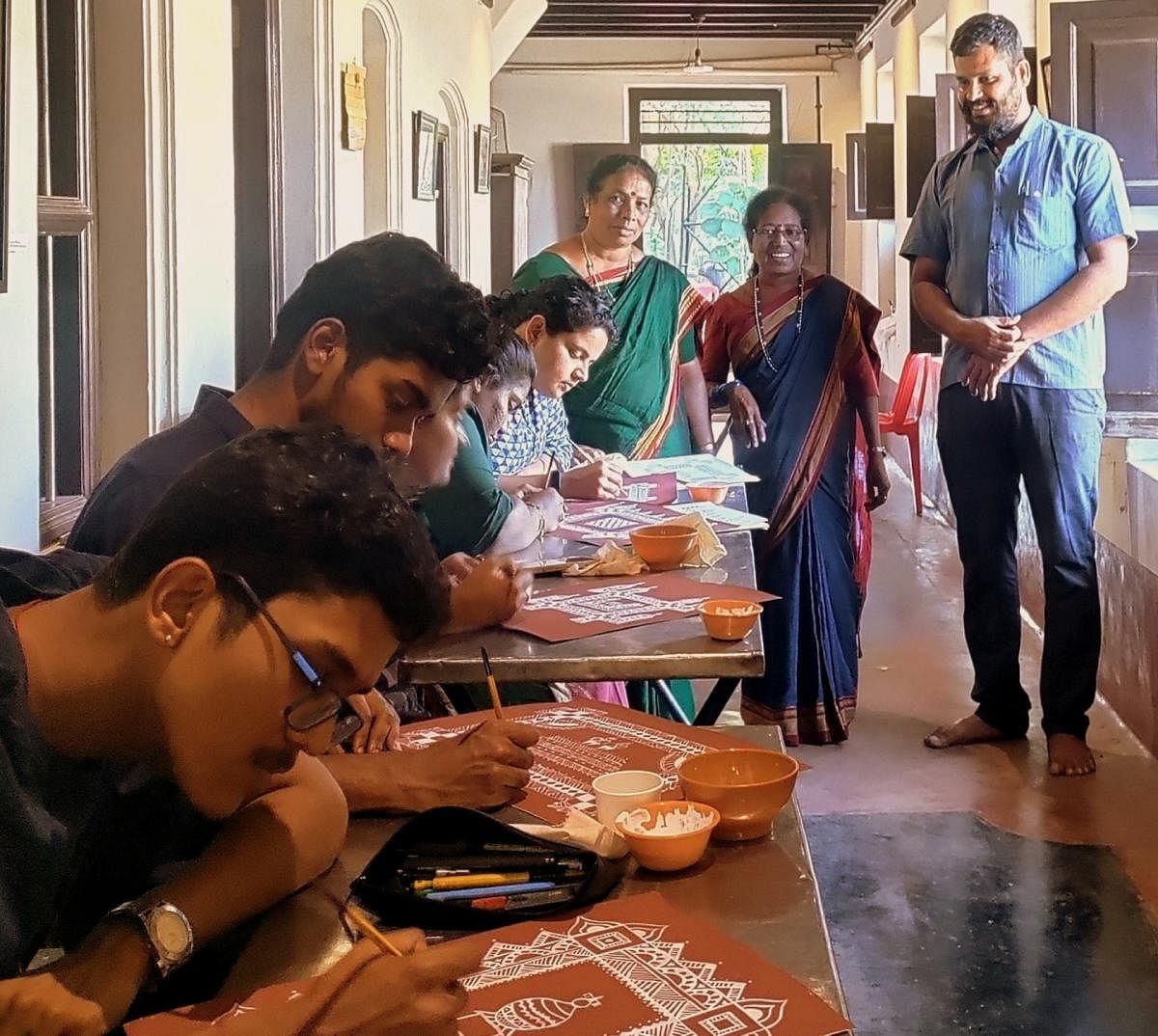

Bhagirathi K B from Bhimanakone, Shivamogga, is nearing her sixties. Yet, obliging to the invitations, she goes to the houses where marriages and holy thread ceremonies are held, to draw ‘Hase Chittara’ on the walls.
She is of the rarest achievers, who has preserved ‘Hase Chittara’, a traditional art and is involved in the efforts to pass on the art form to the next generation.
‘Hase Chittara’ is one of the oldest traditional art forms originating from Uttara Kannada district and is deep rooted into agrarian culture. It comprises motifs in white colour on red background. It is a customary practice in the region to draw ‘Hase Chittara’ on the walls of the house where auspicious ceremonies are held.
Artists like Bhagirathi are invited to the ceremony by offering handful of rice, betel leaves and arecanut. The artist grinds the rice into a fine paste to be used as white paint for drawing. Elements such as ‘mantapa’, bride, groom, musicians, buntings and other motifs are created.
Background preparation
‘Huramuji’ ball made out of local red laterite soil powder mixed with cow dung is used to prepare a layer of red colour for the background for ‘Hase Chittara’. Brush made out of natural fiber is used to draw the paintings.
‘Hase Chittara’ artists are generally women and sing folk songs while drawing them. Speaking to DH, Bhagirathi said she learnt ‘Hase Chittara’ from her mother and grandmother. The art form has come down from generations in the Vokkaliga Gowda community, she said.
Some men also learn and draw ‘Hase Chittara’ in their relatives’ houses. She lamented that there are less people who learn ‘Hase Hadu’ (songs) and ‘Hase Chittara’.
Bhagirathi has taught ‘Hase Chittara’ to hundreds of people so far. She was a resource person during a workshop held in Badagupete, Udupi, recently. The workshop was held on the account of the 20th anniversary of Bhavana School of Art.
Organiser Dr Janardhana Havanje said that the workshop was an effort to rejuvenate the vanishing art form. The attempt was successful with 30 participants. Some of them are willing to continue to learn ‘Hase Chittara’ from resource persons like Bhagirathi and Gowramma, in person, he said.
A learning experience
Dr Rashmi Kodikal, a professor in Business Administration, who was part of the workshop, said it was her first-time learning experience in ‘Hase Chittara’. It was a unique experience to learn from an original artist, she said.
Revathi Nadiger from Manipal said that she attended the workshop along with her daughter. She wanted to introduce her daughter to the art form.